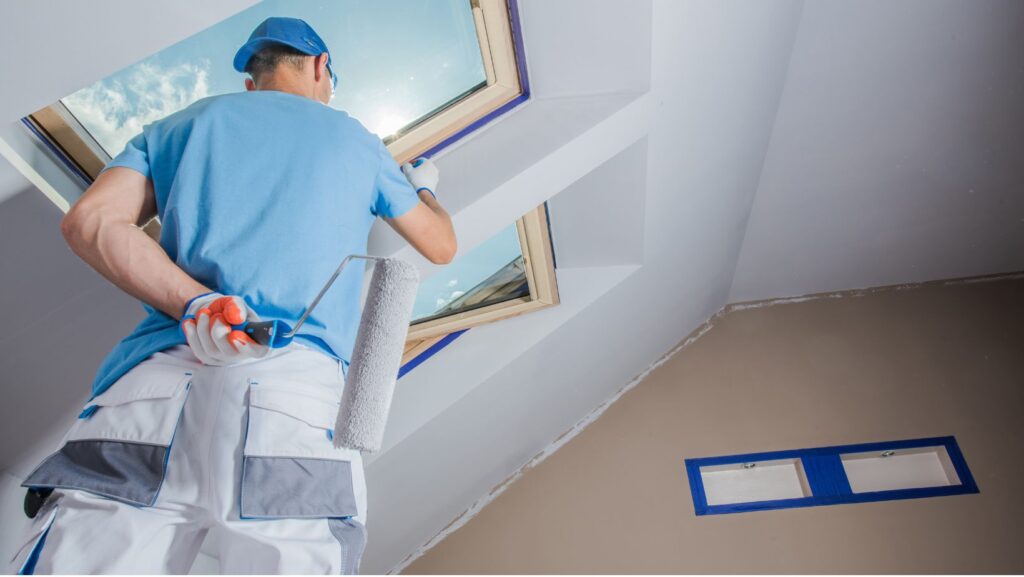
In commercial painting projects, mould is a common worry that may cause major problems, particularly in humid locations like Sydney. Apart from diminishing the durability and visual attractiveness of a paint job, mould might pose a health risk to the residents of a structure. Mould development must be effectively managed when painting a surface by combining effective treatments with preventative measures. In order to help create a durable, visually beautiful area, we’ll look at five crucial tactics for controlling and avoiding mould in commercial painting works.
In Canberra painting projects, the first line of defence against mould growth is proper surface preparation. This is an essential component of every painting project, but in areas where mould development is possible, it becomes much more crucial. Surfaces must be thoroughly cleaned before painting, being careful to remove any possible mildew, oil, or filth. A professional mould remover or a bleach and water solution are effective ways to get rid of mould spores, ensuring a clean surface ready for painting. Furthermore, you must wait for the surface to completely dry before beginning any painting. This ensures that no moisture remains beneath the paint, which might potentially promote the growth of mould. By carefully preparing the surface, painters may provide a solid foundation that prolongs the paint job’s life and reduces the likelihood of future mould growth.
The type of paint used on the project is another crucial element in preventing the spread of mould. Applying mould-resistant specialised paints, which are made with antimicrobial ingredients to stop the growth of mould and mildew, may provide an additional line of protection. Mould-resistant paints are particularly helpful in high-humidity areas where moisture tends to gather, such as basements, bathrooms, and kitchens. Before applying the last coat, prime the surface with mould-resistant paint for the best possible mould protection. These primers create a barrier that prevents mould spores from rising to the surface and dispersing. By utilising the right ingredients, commercial painters may extend the life of their work and reduce the likelihood of future mould returning.
Increasing the ventilation within the building is another sensible strategy to reduce the likelihood of mould growth. As mould thrives in wet, poorly aired settings, increasing airflow might be quite beneficial. Installing exhaust fans in moist areas, such as bathrooms and kitchens, is a simple yet efficient way to start improving ventilation. Using dehumidifiers in places with high humidity levels and making sure the HVAC system is functioning properly are two other ways to maintain a dry atmosphere. Painting jobs may also entail working with building management to assess and improve ventilation systems. This collaborative approach reduces the likelihood of mould formation while also improving the interior environment for occupants.
Maintaining a space free of mould requires more than simply preventative measures; ongoing maintenance and regular inspections are also required. Early detection of potential mould problems depends on routine maintenance and inspections. Building managers should schedule periodic mould inspections, especially for sections that aren’t utilised frequently since they might frequently have hidden mould issues.
It is important to address any moisture problems, including leaks, as soon as they are identified in order to prevent the growth of mould. Regular inspections and touch-ups to areas where paint may have faded can help preserve the integrity of coatings resistant to mould. By employing a professional painter to do these maintenance tasks, building managers may enhance the beauty and health of their property as well as avoid the long-term growth of mould.
If mould does appear, it has to be treated right away to prevent it from spreading and becoming more dangerous. Skilled painters have the knowledge and tools needed to handle moulds appropriately. They usually use specialised equipment and techniques to eradicate mould and prevent it from returning. In severe cases, it could be essential to replace the insulation or drywall to ensure that the mould is completely eradicated. In these situations, quick action is crucial since untreated mould can endanger both the renters’ health and the appearance of the home. Proactive mould removal not only protects the property but also demonstrates a commitment to maintaining a safe and welcoming environment.
Mould treatment and prevention are crucial for commercial painting projects to be both visually pleasant and tenant-safe. By prioritising thorough surface preparation, using mould-resistant paints, improving ventilation, carrying out periodic maintenance, and responding promptly to any mould problems, commercial painters may ensure that their work is durable and effective.
These methods improve indoor air quality and provide long-term mould avoidance. Whether the goal is to avoid health risks or to modernise the appearance of a commercial space, these recommendations may assist in establishing a mould-free atmosphere that benefits everyone.














